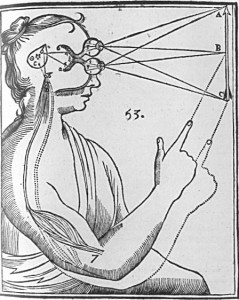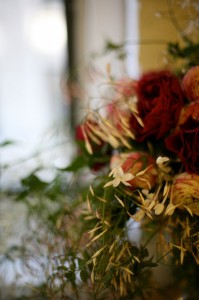Throughout our lifetime, if we are fortunate, we come across a few rare souls who, when we are with them, we are brought right into this present moment. They allow us to experience life in a deeper way than we might have otherwise. When we are with these people, there is a feeling of wholeness and of possibility.
What is this?
I’ll come back to them later, but in the meantime, take a moment to bring up in your mind a couple of your favorite musicians, artists, performers, or actors – those you love listening to, those you admire and who inspire you. There are as many different kinds of personalities among these professions as there are in the general population, but I would venture to say that some of the greatest of them share a couple of qualities. Today I will call these qualities Seeing and Vision.
To me, these words having to do with our sense of sight point to ways of thinking about the way we experience and live our lives.
 Seeing is our awareness of what is – the depth with which we experience this moment. Vision (in my definition today) has to do with the images that we hold in our mind and that flow through us. They shape how we string our moments together.
Seeing is our awareness of what is – the depth with which we experience this moment. Vision (in my definition today) has to do with the images that we hold in our mind and that flow through us. They shape how we string our moments together.
By seeing, I mean a quality of experiencing the current moment without labeling it, assessing it, or judging it. This experience is summed up by the title of a much-revisited book on my bookshelf by Jon Kabat-Zinn called Wherever You Go, There You Are. I love that title! And it is a wonderful book full of ideas for incorporating being here in daily life. To me it feels like a “sinking in” or “awakening” to the senses. As musicians, our “seeing” is settling our attention primarily what we hear, but also what we feel in our bodies.
So as a horn player, when I sit down to warm up and practice each morning, my first order of business is to cut through my “brain noise” – all those thoughts and distractions and worries ricocheting around in there – shed some of the layers of my ego (what I think I always sound/feel like) and self-consciousness (what I fear I might sound/feel like!) and focus on what I DO sound and feel like. My job is to say hello to the here and now.
One part of learning how to do this is to know when to get rid of our should’s.
Here is one example: as horn players, we are often very concerned with our breath and the process of breathing. We want to do it correctly, efficiently – we want to get the most bang for our buck. One of my very favorite yoga teachers and writers is Donna Farhi. She has a book all about breathing called The Breathing Book. (Go figure!) In one passage, she explains one way of freeing yourself up to move towards the most natural and efficient way of doing something – in this case, breathing:
You might be asking, “What should I feel?” Instead ask yourself what it is that you do feel, and you will be on the right path. Trust that if you let go of your preconceived ideas and expectations the vitality of the breath will emerge naturally.
I remember a lesson I had with Julie Landsman. I was particularly frustrated at the time, and my mind had been hopping all over the place. I was paralyzed by all of my “should”s. I was in a major battle with myself and I wanted to know concretely what to focus on. A checklist, please! So I asked her what she focused on when she picked up her horn in the morning. She said something to the effect of, “I am just hearing and feeling.”
Just hearing and feeling!
Another quality that the great souls of the world contain within themselves, I believe, is the ability, while holding this present moment, to ALSO hold an “image” of the potential that is inherent in this moment and the moments to follow. It is something I call vision, although the word vision only scratches the surface. It is something that employs our imagination, and is guided by our deepest beliefs and by what is most important to us. It is akin to beholding something of great power and beauty and letting that image work in us and live itself out through us.
When you think about the great artists of the world, the masterpieces that they produce aren’t great because they show us reality (that takes skill, but it is only skill), but because they show us their vision of what lies beneath or beyond reality in their view. They show us something unseen that we might otherwise have not seen. So in a portrait by Rembrandt, we see not only the image of a person, but we may see something about that person’s nature, their dreams, their sense of humor, or the things that haunt them or fragment them. In a non-realist portrait, one by Picasso for instance, we experience the same thing, only with the use of a different “language.” Maybe we see shadow and light, or duality, or complexity, or brightness, or joyfulness, or energy!
In other words, what we can experience when we contemplate a great work of art is the artist’s unique perspective and a deeper perception or – vision.
What does this mean for a mere horn player? What forms our vision? For starters: our values. What are the musical values you most treasure? Quality of sound? The way one note moves to the next? Trueness of phrasing? Solidity? Facility? Consistency? All of the qualities you treasure and admire in others will form your vision for yourself. This is one reason it is so important as a young musician to be extraordinarily attentive, to go to concerts, listen to recordings, and experience music as much as possible. It is forming and informing Vision.
So in the practice room, our job is to see what is and hold it up to the reflection of our Vision. There’s nothing more satisfying than bringing the two ever more closely together, holding them there in your consciousness at the same time, letting your Vision live and breathe its way into you.
But it always starts daily, over and over again, with this moment. It is a constant renewal of commitment to seeing what is with no judgment attached – just noticing. It is a very gentle, but constant thing. Then as Seeing and Vision reflect back and forth to each other over time and live and grow together for a while, we can even have the feeling of being taken by surprise by the beautiful things that arise and bloom in their own good time. I was recently reading the blog of Linda Grace (www.rolfinggrace.com), a fantastic Rolfer here in Philadelphia – she is insightful and full of ideas! She quoted T.S. Eliot’s “Burnt Norton” in her most recent post:
 And the bird called, in response to
And the bird called, in response to
The unheard music hidden in the shrubbery,
And the unseen eyebeam crossed, for the roses
Had the look of flowers that are looked at.
Just as we feel nurtured and whole and full of possibility in the presence of certain people who, with their vibrant, aware, and gentle presence enable us to feel the fullness of our own lives – we can do the same for ourselves and for others around us on a daily basis just by being here and reflecting our Vision both in and out of the practice room. So give it a try! See if you can “sink in” and give of your attention and presence. The important people in your life, qualities you are nurturing, and your horn playing might just might end up having the look of flowers that are looked at. Listen for the unheard music in your life. See what arises!
Resources:
Jon Kabat-Zinn, Wherever You Go, There You Are: Mindfulness Meditation in Everyday Life
Donna Farhi, The Breathing Book: Good Health and Vitality Through Essential Breathwork
